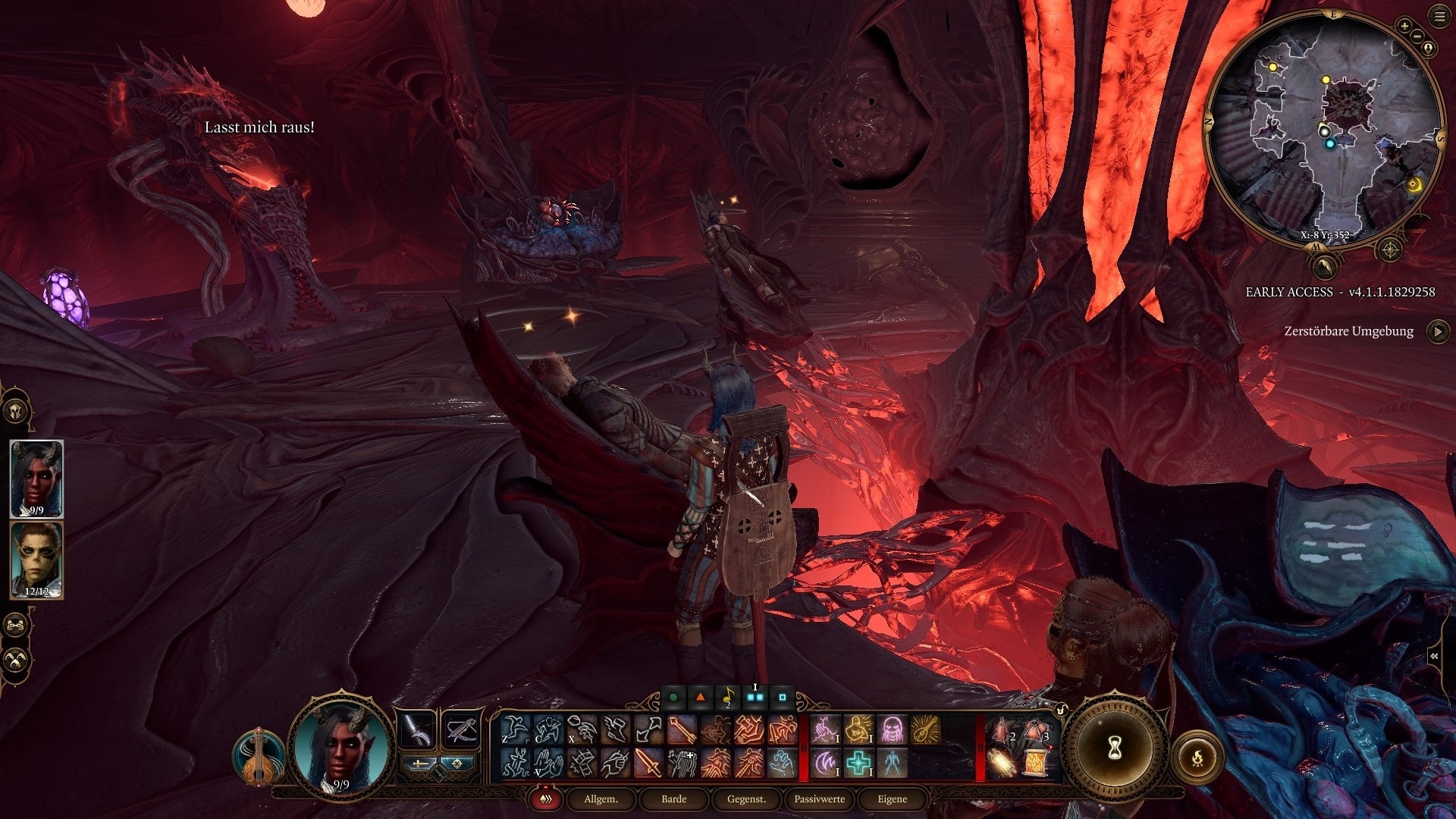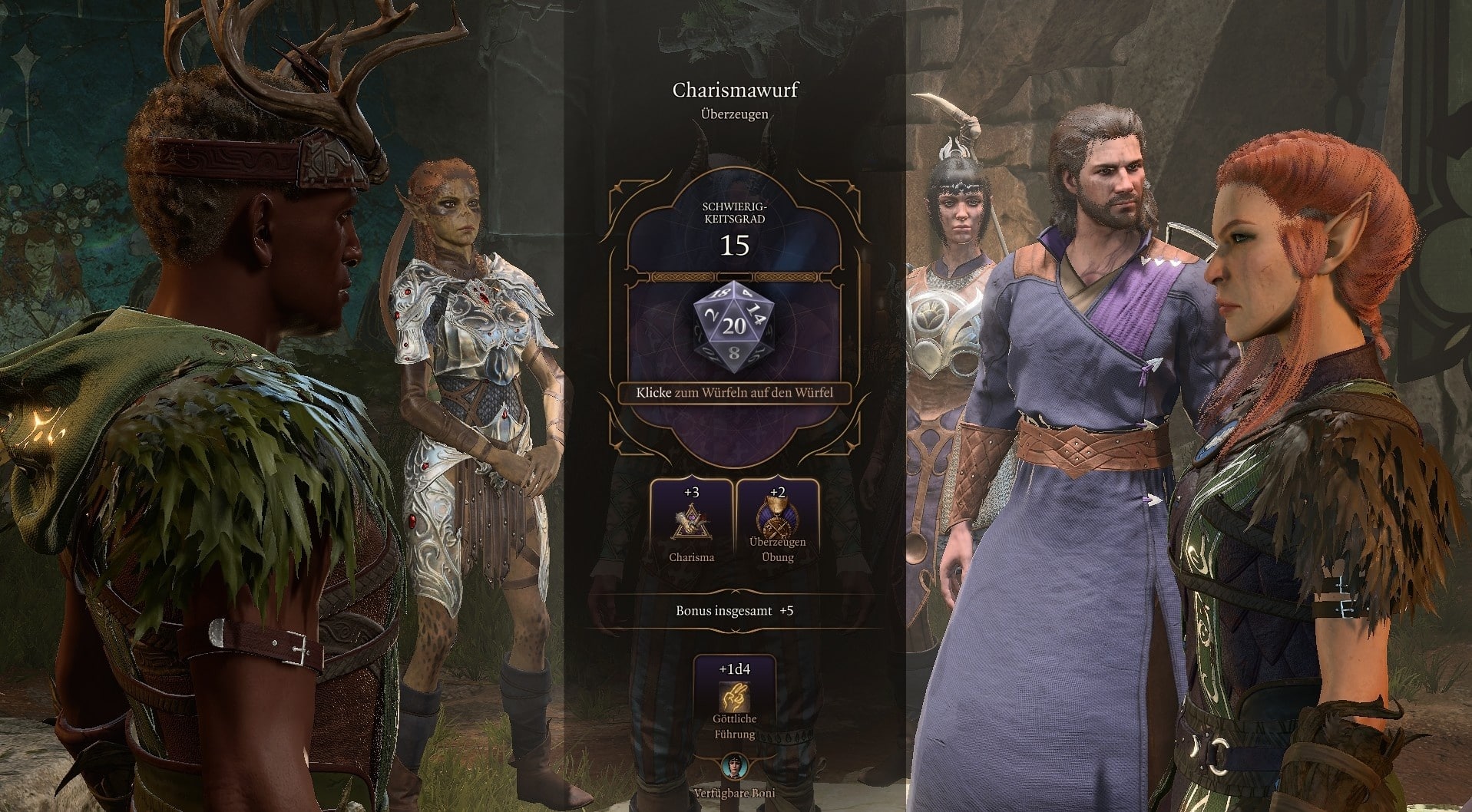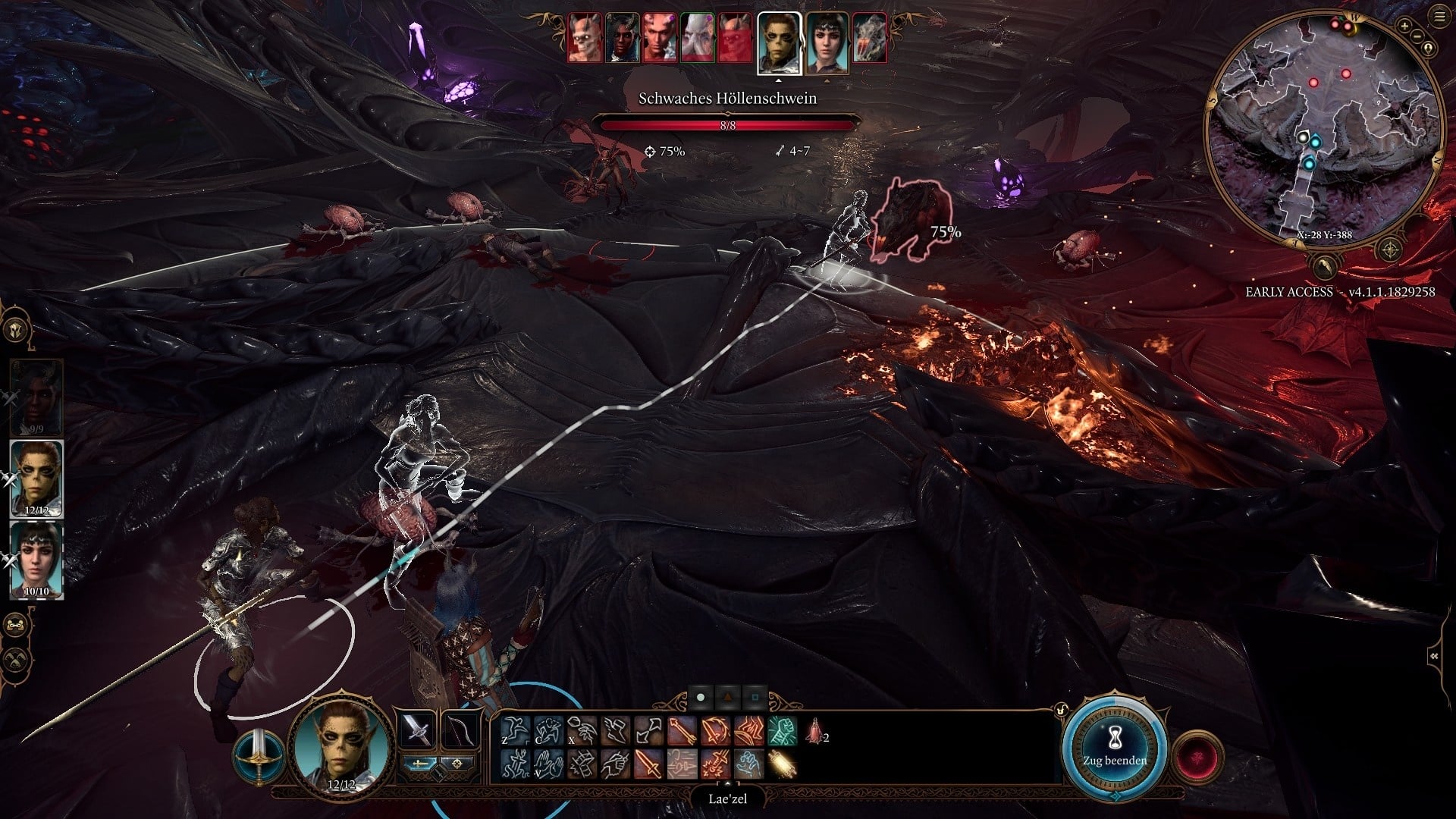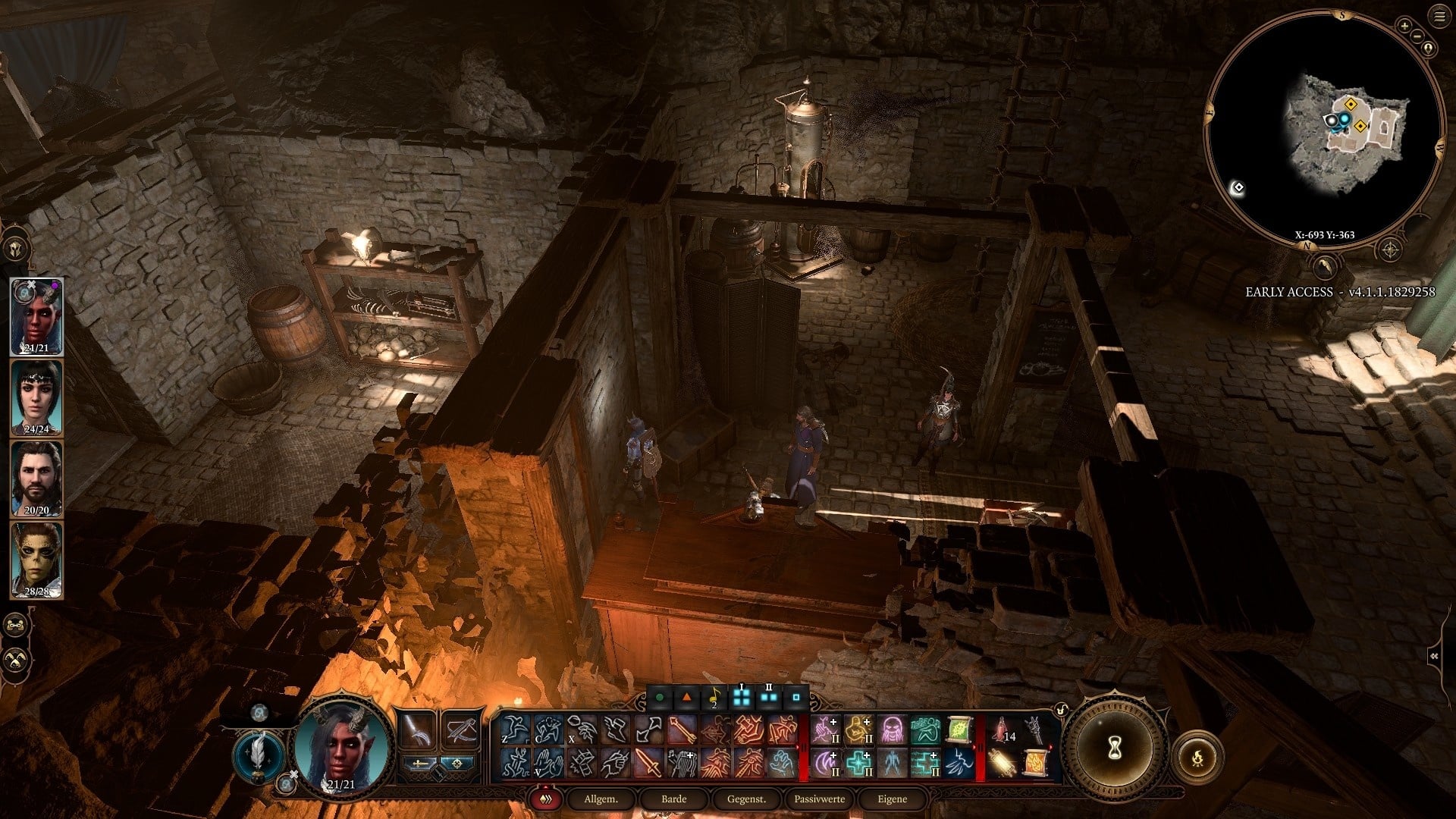– Advertisement –
Baldur’s Gate 3 is not a true successor for many: turn-based instead of real-time combat, a new story. Gloria doesn’t understand that, because she feels a lot of nostalgia while playing.
Baldur’s Gate 3 offers me something that is in short supply in many overly linear games nowadays: freedom of choice. Already for the main story I have to either make friends with supposed enemies, butter up merciless fighters or rely on the help of a stupidly lost person, supporting further quests included.
And all this happens just in the first act, the only playable content of Larian’s new role-playing game so far. Because Baldur’s Gate 3 has been in Early Access on Steam and GOG.com for two years now.
I was also one of the people who bought Baldur’s Gate 3 at the start of Early Access, but due to a lack of time it remained on my Steam Pile of Shame for the time being. Nevertheless, I had heard a lot about Baldur’s Gate 3 in the two years since: It was supposed to be a great role-playing game, worthy of the legacy of the fantastic Divinity: Original Sin 2, as close to the pen-and-paper game feeling as any other genre representative – but also not a “real” Baldur’s Gate.
The turn-based combat, the backstory set 100 years after the events of Baldur’s Gate 2: Many gamers have gripes with Larian’s official sequel to their beloved role-playing series. I, too, adored Baldur’s Gate 2 as a young adult, which is why I was curious to see if Part 3 could bring back the feeling I had back then. What I discovered in my search for the nostalgic memories, you can read in this article.
Fly and conquer, little halfling
The variety of possibilities also continues in the side missions, for the vast majority of problems there are at least two or even more solutions. So you are not limited to a certain group constellation and can try out a lot with your main character. Even if something goes wrong, you will at least have a good laugh in addition to the learning experience.

Little tip: When rescuing a victim tied to a windmill wing, you should pay very close attention to which of the two control levers for the wheel mechanism you use, otherwise this mission could come to a rather inglorious (but funny!) end.
I also already know that I will regret at some point in the rest of the game that I let my Tiefling Bard use the Mind Flayer manipulation possible thanks to the Brain Parasite from time to time. Still, it just feels way too good to let annoying NPCs just crawl in front of my character for a bit or to pave my way without dice rolls!

Without supernatural help, however, it works just as well, just with a different storyline or new challenges where the direct path is not always the best. It gets particularly exciting when the motives of multi-layered NPCs are not immediately apparent and you have to decide whether you’d rather believe in the innocence of the harassed old woman or her two pursuers who think she’s an evil witch.
This keeps me enormously interested because I stay curious about all the other possibilities and reload my save every now and then to see what options I still have. And who wouldn’t want to hire a bunch of bad-tempered ogres who were actually in the pay of our enemies to give them a nice surprise in the big battle? The joy of trial and error has always made Baldur’s Gate special to me, and I’m glad to discover that in the latest spin-off as well.
Drama Llama ahead
Finally kicked me into the nostalgia corner, however, were the group members, whose word fights and mutual bitching really set the mood. Have you ever had the half-elf Jaheira in your party, the summoner Edwin or the druid Faldorn? I still remember their funny exchanges, as well as the sometimes bloody animosities between the good paladins Ajantis or Keldorn and the Drow cleric Viconia. It took quite a while before the discord in my rather motley group no longer got on my nerves.
But twenty years ago I was also a player who wanted to have a perfect solution for the whole story, in which everyone liked each other and worked together to save the world. Besides, I had no idea about D&D!

This has long since changed, and by now I enjoy the group hijinks and the excellently written characters with the energy of a chaos tourist who watches the rear-end collision enthusiastically even as the car is just picking up speed. Even if this bombs my painstakingly cherished group constellation for the time being – Baldur’s Gate 3 has plenty of potential for this.
At the latest when the half-elf cleric Shadowheart and the Githyanki warrior Lae’Zel once again clash in a sharp-tongued manner, Baldur’s Gate 3 feels incredibly familiar. I particularly enjoy the ineffectual flirting attempts of Warlock Wyll, who tries hard but is always rather rudely rebuffed.

Lae’Zel is for me the best candidate for the Faerûn bitch award, because she basically doesn’t accept any other opinion than her own and regularly gives me a sideways look when I don’t do what she wants. Which – if I’m honest – happens quite often, since she’s not exactly the biggest fan of altruistic action and I still quite like saving the world. Well, most of the time. When I’m not using the Ilithid parasite!
Frat bang without key stress
Probably some will shake their heads quite a bit from this section on, as I consider the changed combat system to be the most important and best innovation of Baldur’s Gate 3. I know there are a lot of people who swear by the real-time paused combat of the first two Baldur’s Gate games.
Sure, the concurrent effects used to look way cooler – I remember being impressed and totally overwhelmed by the on-screen colour storm at the same time. But the learning curve for D&D newbies like me was fierce in such battles. Those who had little experience with the amount of spells and their effects had to do a lot of trial and error and reading up.

At the time, I felt like I was constantly hitting pause to avoid losing track of spells, attacks and possible countermeasures. In any case, given the successor’s many new options for combat design, a little more time for tactics is not amiss. Especially when it comes to making the best use of the position of the party members on the battlefield, the best possible attack distance, spells and extra weapon options, I get on much better with a turn-based way of fighting.
I really like the fact that my party members can now stick their weapons in a fire field, for example, to get a temporary fire effect as a little damage extra. I wish I’d had this ability during all the troll fights in Icewind Dale!
Divinity: Original Sin 2 showed me how exciting battles can be when I control the battlefield with the abilities of my party members, no matter how lousy the starting position is. I was particularly fond of the rain spell, which I used to create a huge pool of water under my enemies, only to rush in with a lightning arrow or equivalent spell and roast all the enemies Emperor-style.
Clearly D&D offers some much more direct possibilities, but sooner or later all spells are used up in long fights, especially with beginner characters. So it’s not wrong to have a few other options up your sleeve – even if it’s just an overturned water barrel and the aforementioned lightning arrow.
A mug of tea and a cavern
But all the reasons mentioned don’t even come halfway to that one, decisive and conceivably unspectacular moment in Baldur’s Gate 3, in which I first really became aware of what I had been missing for 20 years: With my hero group, I rummaged through a half-destroyed house in which there was a hidden entrance to a cellar system in which an alchemist’s parlour was set up. In the cellar next door I was able to spy some more things, but at first I couldn’t find a way to get there – at the latest that’s when my curiosity really kicked in.

Without any walkthroughs, I had to figure it all out myself and couldn’t take the convenient route. Armed with a mug of my favourite tea and wrapped in a blanket (autumn comes early in the Bavarian forest!), I set about scouring half the village to find the right entrance. Suddenly it was just like back then: I was comfortably fiddling away while I left the main story and devoted myself to this one, small and totally unimportant problem.
As before, I calmly looked around on the map without paying attention to missions to be solved or the like. I found a cute dog for my camp, had interesting conversations at every rest and enjoyed a good portion of RPG Zen while rummaging and exploring.

It no longer mattered how far I had already got in Baldur’s Gate 3. Until I reach the end of the part playable in Earl Access, I’m sure a few more hours will pass. I’m not in a hurry, it’s far too much fun to change my camera angle in the 3D environment or to zoom in close to details that interest me – there are certainly enough of them.
Of course, a lot of things are different in Larian’s version and take some getting used to; the visibly rolling cube, for example, still seems a bit forced to me and keeps pulling me out of my immersion. But if a game can bring back an old feeling of familiarity so strongly, then it also does many things right. And that is more important to me than any fundamental discussion about real-time versus turn-based combat or a few minor bugs.
